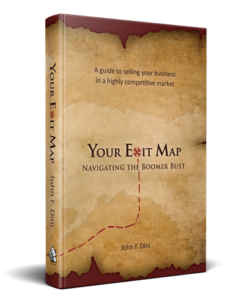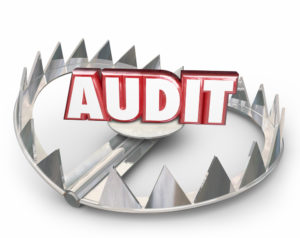Almost since time began, the nimble small business has been axiomatic. Large corporations are like big ships, the common knowledge goes. They take a long time to change direction.
 That is a comforting thought to business owners who choose to see their one-person strategic planning team as a competitive advantage. Like the small furry mammals that survived as the dinosaurs died out, they are adaptable. The nimble small business can react to changes in the market faster, with less bureaucracy, and with greater attention to the customer’s needs.
That is a comforting thought to business owners who choose to see their one-person strategic planning team as a competitive advantage. Like the small furry mammals that survived as the dinosaurs died out, they are adaptable. The nimble small business can react to changes in the market faster, with less bureaucracy, and with greater attention to the customer’s needs.
There is one problem. That “common knowledge” is no longer true. In fact, a new definition of nimble is rapidly becoming the proprietary playing field of giant corporations. Privately held companies, already under increasing competitive pressure, are being squeezed out of their traditional role as innovators.
The Competition for Data
The new player in the big/small competition is data. Companies are in an arms race to understand the buying habits of their customers. It is a race that, by nature, goes to the player who has the most customer contact.
Amazon is the most obvious example. Their prices on any item change on a minute to minute basis. They are adjusted depending on the individual customer’s buying history, time of day, and current sales volume of the product.
I’m guessing that they might also be impacted by geographic area of the buyer, weather in that area, and purchases by family members. If that isn’t the case now, it soon will be.
A friend bought a couple of gas cans for his ranch. The next time he went on the web, he was fed an ad for a gas can holder made specifically to hold those two cans. He bought it, although as he said “It ticks me off to have them know that I want a product before I do.”
That is one less visit to his local farm and ranch store. They’ve been good vendors for years. They let his contractors pick up supplies for the ranch and he pays the next time he comes in. He likes them, but they don’t know what he wants before he does.
Not Just Internet
This capability isn’t limited to Amazon and Facebook. In 2016 General Motors invested $500 million in Lyft. In a recent article, GM’s CEO said that they were preparing for the day when ride sharing reduced new vehicle volume.
They hope to make up at least some of the missing revenue with data sales. If they know where people are going and when, they have a valuable commodity to sell.
Grocery stores are climbing on the data bandwagon. Who knows better what you like or avoid? They can tell suppliers (those who can afford to buy the data) where to direct advertising dollars for the greatest impact.
Netflix now has over 50,000,000 active subscribers. A fortune awaits anyone who can correlate viewing habits with buying patterns. If they don’t have the capability already, I’m sure someone is working on it.
Nimble Small Business
What does this have to do with exiting your business? A lot. Whether you are planning to sell to employees, family or a third party, the buyers are almost by definition younger than you. They understand the value of data.
When they ask how well you know your customers, what will your response be? If you have their names, addresses and emails, that’s a start. If you regularly reach out to them with content that is opened and read, that’s another level up. If you can target them by past purchases, age, location or income, that’s beginning to be nimble.
If you think that greeting them by their first name when they walk in is enough, you are nearing the end of the Cretaceous Period. You want to be with the mammals, not the dinosaurs.
“Read” my new book in 12 minutes!
 Your Exit Map, Navigating the Boomer Bust is now available on Amazon, Barnes & Noble and wherever books are sold. It is ranked the #1 new release in its category on Amazon, and is supplemented by free tools and educational materials at www.YourExitMap.com.
Your Exit Map, Navigating the Boomer Bust is now available on Amazon, Barnes & Noble and wherever books are sold. It is ranked the #1 new release in its category on Amazon, and is supplemented by free tools and educational materials at www.YourExitMap.com.
Now, we have a really cool 12 minute animated video from our friends at readitfor.me that summarizes the book, and helps you understand why it is so different from “how to” exit planning tomes. Take some time to check it out here. Thanks!
 Your Exit Map, Navigating the Boomer Bust is now available on Amazon, Barnes & Noble and wherever books are sold. It was ranked the #1 new release in its category on Amazon, and is supplemented by free tools and educational materials at www.YourExitMap.com.
Your Exit Map, Navigating the Boomer Bust is now available on Amazon, Barnes & Noble and wherever books are sold. It was ranked the #1 new release in its category on Amazon, and is supplemented by free tools and educational materials at www.YourExitMap.com. That is a comforting thought to business owners who choose to see their one-person strategic planning team as a competitive advantage. Like the small furry mammals that survived as the dinosaurs died out, they are adaptable. The nimble small business can react to changes in the market faster, with less bureaucracy, and with greater attention to the customer’s needs.
That is a comforting thought to business owners who choose to see their one-person strategic planning team as a competitive advantage. Like the small furry mammals that survived as the dinosaurs died out, they are adaptable. The nimble small business can react to changes in the market faster, with less bureaucracy, and with greater attention to the customer’s needs. It will absolutely be an issue if your growth rate falters during due diligence. It’s hard to go through the machinations of a transaction and pay attention to driving the company at the same time. Just be aware that taking your foot off the gas will be noticed, and accounted for.
It will absolutely be an issue if your growth rate falters during due diligence. It’s hard to go through the machinations of a transaction and pay attention to driving the company at the same time. Just be aware that taking your foot off the gas will be noticed, and accounted for. The first is accrued vacation or PTO. It is customary to keep records of this liability off the balance sheet, but professional buyers don’t see it that way. The benefit was earned while producing for the seller. They buyer has no reason to pay it out for work that wasn’t done for him.
The first is accrued vacation or PTO. It is customary to keep records of this liability off the balance sheet, but professional buyers don’t see it that way. The benefit was earned while producing for the seller. They buyer has no reason to pay it out for work that wasn’t done for him. A single customer who accounts for 10% of your business may not warrant a price discount, but one who controls 20% or more of your revenue almost certainly will trigger renegotiation. You may have a decades-long friendship with that business, but a buyer has little confidence that he or she can maintain the same relationship.
A single customer who accounts for 10% of your business may not warrant a price discount, but one who controls 20% or more of your revenue almost certainly will trigger renegotiation. You may have a decades-long friendship with that business, but a buyer has little confidence that he or she can maintain the same relationship.